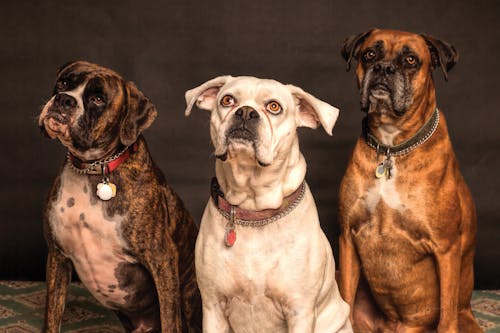The French bulldog is a canine breed of the family of molasses that first appeared in the East with the Supermoons, and whose main characteristics are a brachycephalic skull, a stocky and short body near the ground, dangling lips, and an imposing musculature. It descends from the English bulldog, from which it derives certain peculiarities, such as the flattened snout and the powerful jaw. The hair is quite short, the dress sometimes brought. It has long ears pointed upwards and round.
Bulldogs are medium-sized, about 30 cm, making them relatively small molasses, also called mimosas.
Origin
Fossils that could help locate the original location of dogs of this type are rare. On the other hand, there are ancient clues of their existence: the Assyrians left bas-reliefs dated to the 5th century BC, where dogs of this type appear, close to the dogs of Tibet.
Their natural fighting skills have made them prized auxiliaries to groups of barbarian warriors from the eastern regions. The original breed, present for about 5,000 years in the Region of Tibet and used mainly as a weapon and as an assistant for hunting big game, has evolved considerably along its journey to Europe, due to the constraints of nomadic life and crosses with local breeds. The breed was reportedly introduced to Britain by Phoenician navigators under the name “Pugnace of Brittany”, its origin probably comes from the “Molossed’Epirus”.
Their use as fighting animals, against other dogs, large animals, or against wild animals (bears, lions, bull, etc.) is also attested, eliciting admiration for their courage. These practices did not begin to decline in the United Kingdom until 1835 when law prohibited them: they continued clandestinely for at least half a century. It was these practices that gave them his name: bulldog.
The average size decreased steadily between their introduction to Europe and the end of the 19th century, along with other morphological variations, by a selection of the least imposing individuals.
Their use then evolved into rodent and buffalo hunting in England, by crossing with terrier-type dogs, which helped to improve their tenacity. These successive inter breeding’s have undoubtedly produced individuals with the right ears.
History
It was around 1850, after the ban on bullfighting in the United Kingdom, that the English bulldog was imported to France by British workers and then crossed with rattan from the suburbs of Paris1. His descendant, the French bulldog, met with some success with Parisian merchants and then as a pet dog by Westerners on both sides of the Atlantic Ocean.
At the end of the 19th century, the Kennel Club already accepted as a cannon toy bulldog, close to the French bulldogs. This was the subject of endless discussions between the French and the British… Nevertheless, the French maintain the idea that the canon of race belongs to them and that the race existed long before. It is likely that these toy bulldogs mated with small French rats and that from these crosses appeared this small dog of 11 kg, closer to the bulldog than the rat. A selection should give preference to straight ears rather than folded ears and a stockier body. These dogs were used both for the hunting of unwanted rodents and as a pet dog, especially with butchers in the Districts of La Villette and Les Halles in Paris, or with prostitutes where their originality seduced visitors. At that time, Toulouse-Lautrec adores these fun, cheeky little dogs with a remarkable frolic. The popularity of this dog grew among some amateurs such as Edward VII who can be seen in some photographs in the company of his French bulldog called Peter. The French bulldog was also the darling of Mistinguett, Colette, and Yves Saint Laurent. The breed was a huge success as far as the United States, where personalities such as Josephine Baker became encased in their little animal. With the difficulties and agonies of world wars, many dog breeders abandoned their breeding, so that this breed gradually lost its notoriety. However, from 1980 there was a resurgence in the breeding of French bulldogs, which had become very fashionable since the 2000s. French bulldogs are sometimes called “boubou” or “bouli” by enthusiasts.
